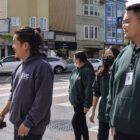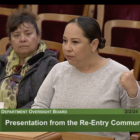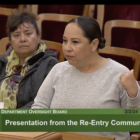Edited by Anne Shisko & Ambika Kandasamy
World Affairs Council panelists say U.S. facing big demand for clean source of power
The Fukushima Daiichi nuclear power plant disaster in Japan, caused by the magnitude 8.9 earthquake and tsunami, has opened a dialogue about nuclear energy policy and safety of reactors in the U.S.
A panel of experts from the Bay Area gathered at the World Affairs Council of Northern California in June to discuss nuclear energy regulations, safety and financing. They also debated the role of alternate energy sources at home.
Host Lucas Davis was joined by Thomas Isaacs, consulting professor at the Center for International Security and Cooperation at Stanford University; Per F. Peterson, chair of the Department of Nuclear Engineering at the University of California, Berkeley; and V. John White, executive director of the Center for Energy Efficiency and Renewable Technologies, a nonprofit public-interest energy policy group in Sacramento.
The following is an condensed transcript from “Powering America: Does Nuclear Have a Future?”
Lucas Davis: During the crisis, it seems like we heard everything, from that this is going to have no effect on U.S. nuclear power, to that this is going to effectively put an end to discussion of all of this U.S. nuclear renaissance, as some people were calling it.
Now that a bit more time has passed and better information is available, it seems like a good chance to reflect on what we’ve learned so far. So, Per, what safety lessons have been learned from the disaster at Fukushima, and how do they relate to current and future U.S. facilities?
Per F. Peterson: The thing about the Fukushima accident that makes it unique is that it’s the first large-scale major reactor accident that we’ve had in the world that was not initiated by some combination of equipment failures and human errors, as was the case with TMI [Three Mile Island] and with Chernobyl. So, instead, it was initiated by an extraordinarily destructive external event, which caused extensive damage to the plant.
So, in terms of specific lessons, one of the things that we need to study and learn more about — and, already, there’s information coming out — is what was the combination of problems with the physical damage to the plant; the pre-deployment of portable equipment; the severe accident management guidelines that are in place, and the decision-making process that led to substantial delays in the action to begin the injection of seawater and, therefore, prevent damage to fuel and the progression of the accident?
Davis: So, Tom, give us a little context here. Can you please tell us what you see as the largest hurdles in terms of policy, financing and storage facing the expansion of nuclear energy in the U.S. and internationally?
Thomas Isaacs: It’s one thing to say that a technology is economical, but these plants are very expensive to build, and they take a long time to build, and you have to run them for very long times to recoup your investment. So you have to look at the possibilities of financing the construction of these plants. They’re expensive to build, relatively cheap to run, but getting that money will not be easy.
You asked the question about what we need in the way of policies. What we really need is a policy. We need a policy that’s clear, and it’s got to be stable, and it’s got to be compelling.
On the international side, there are 30 or 31 countries today [that] have operating nuclear power plants. A small number of those plants, as a result of Fukushima plus other events, may indeed gracefully exit the stage. Countries like Germany, Switzerland, Japan have talked about removing it.
Some countries, I believe, will probably make a diplomatic pause while they look at the consequences here, and then continue. In particular, China, India, South Korea are examples of the future of nuclear power. That’s where the future is — it’s in Asia.
Davis: If you look at the Department of Energy’s Annual Energy Outlook, they forecast that by 2035, we’re going to be at a 30 percent increase in energy, about a 22 percent increase in electricity.
A recent study by The Brattle Group reports that to meet this increase demand is going to require a $2.5 billion investment in new generation and infrastructure. Meeting this increased demand at reasonable cost without a substantial increase in carbon dioxide emissions is a giant challenge. John, what can we do? What other green technologies, aside from nuclear, do you see as being capable of fueling America’s energy needs, now and in the future?
V. John White: The first place to look for green energy is in our buildings and our homes, where we waste an enormous amount of energy that is simple to capture.
One technology that is probably universal among the renewables is biomethane from wastewater treatment plants, from animal waste, from dairies and the like.
In California, again, we have a substantial amount of biomethane that is generated and currently not converted. Some of it is flared through landfills; some of it is allowed to evaporate. So capturing the methane that is coming from our waste products, food processors, and so forth, we have technologies available and getting cheaper all the time that can convert those technologies to, in some cases, zero-emission electricity.
In the western U.S., we have abundant solar resources, and we have technologies that are moving forward today with available subsidies and programs to support them.
I do know that if we can put 33 percent renewables in the California grid, which is going to happen partly because of legislation recently passed by Senator Joe Simitian and signed by Governor Brown — if we achieve 33 percent renewables by 2020, that will be a signal to the rest of the country that we can do a lot with these technologies.
Listen to the complete audio program from the World Affairs Council.
World Affairs Council is a forum with more than 18,000 community participants where diverse audiences engage in dialogue. Find the World Affairs Council online at itsyourworld.org









